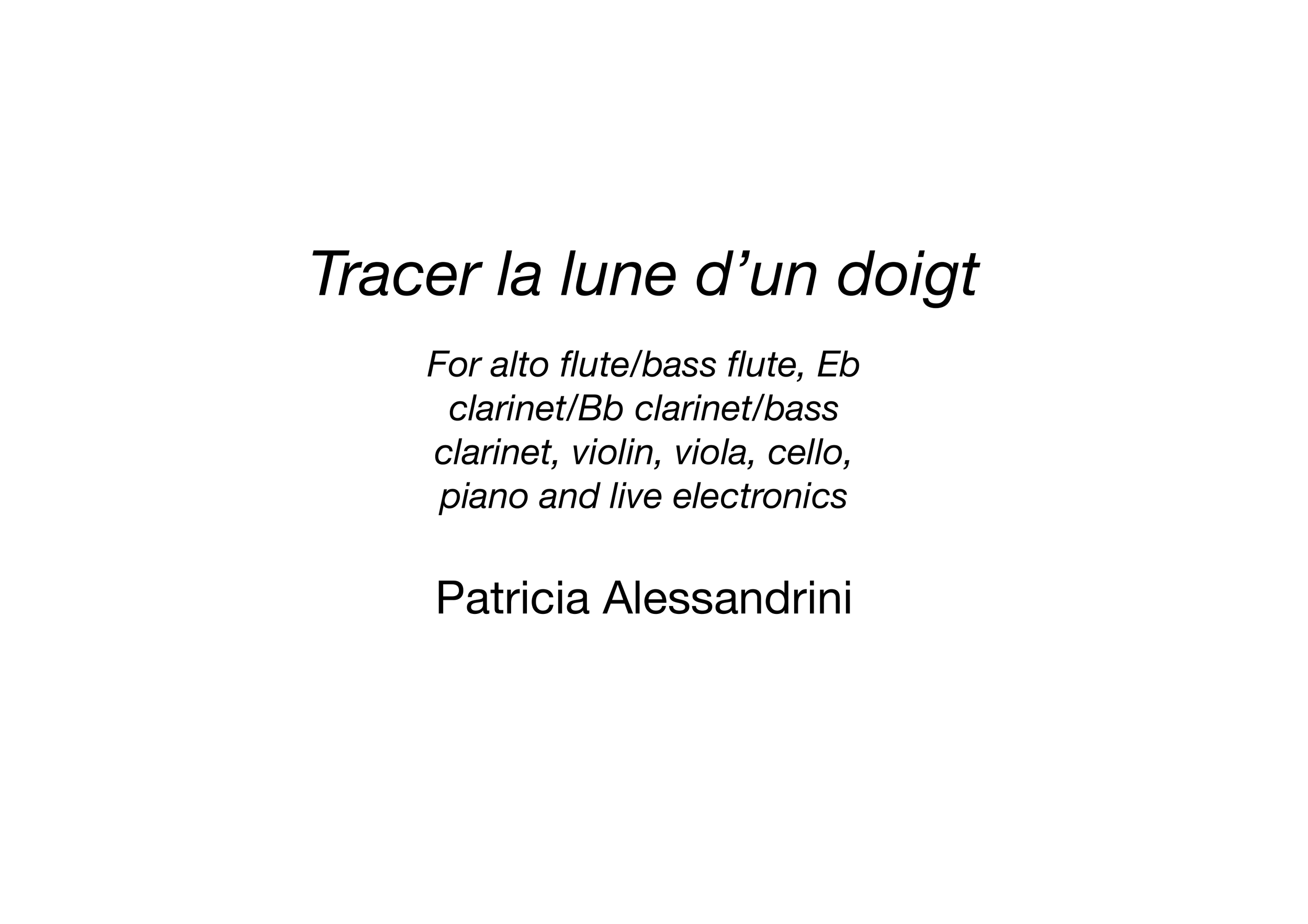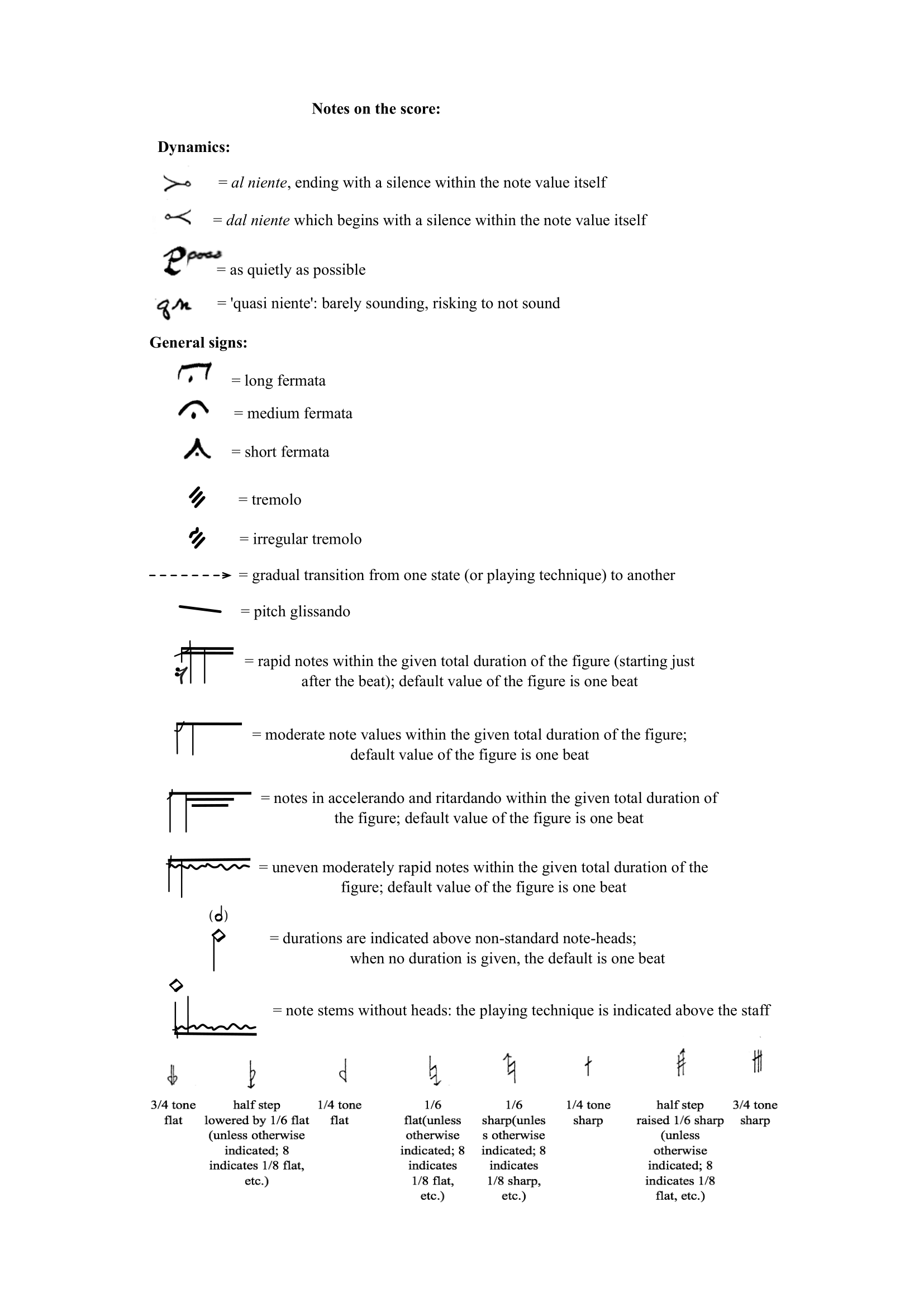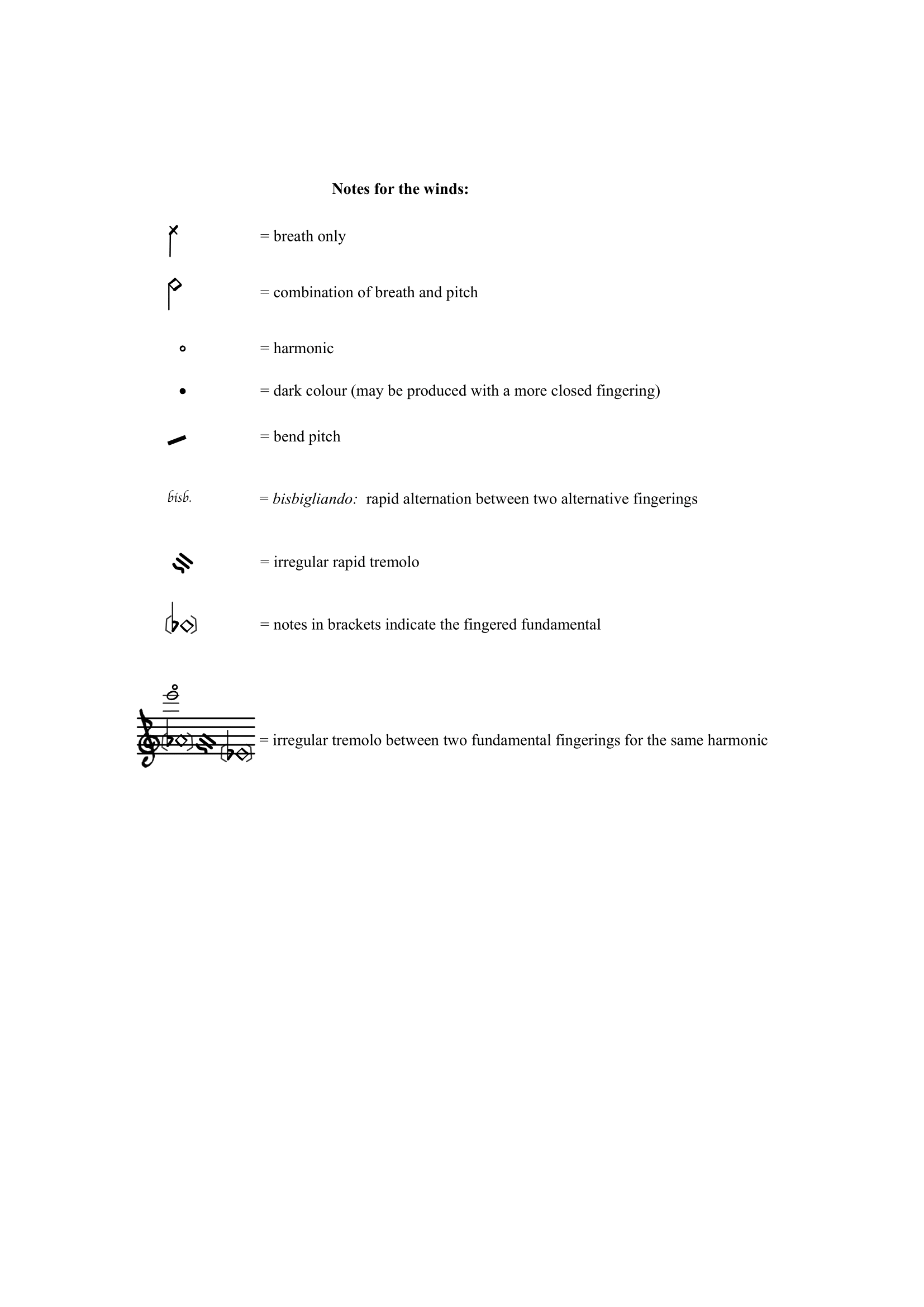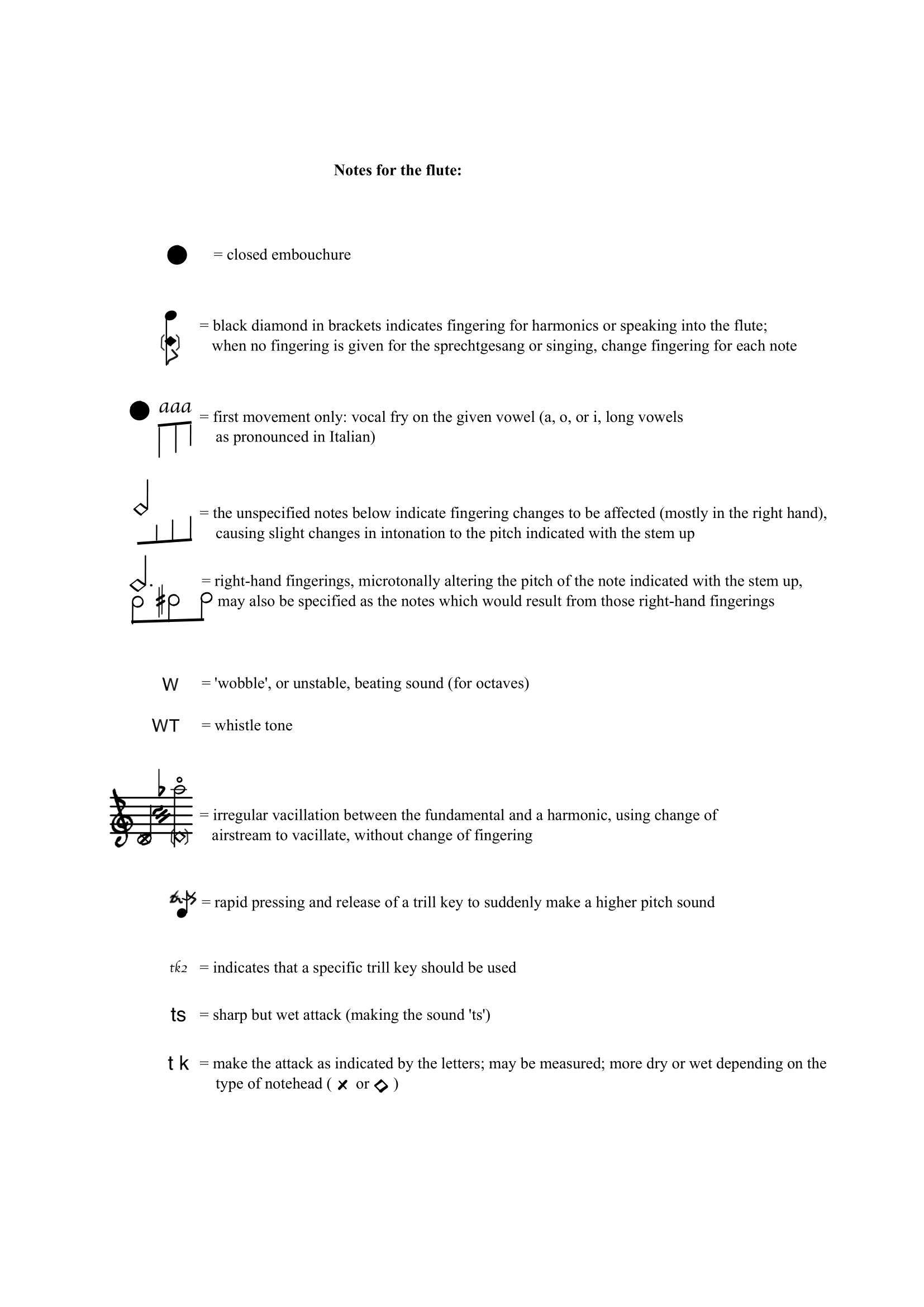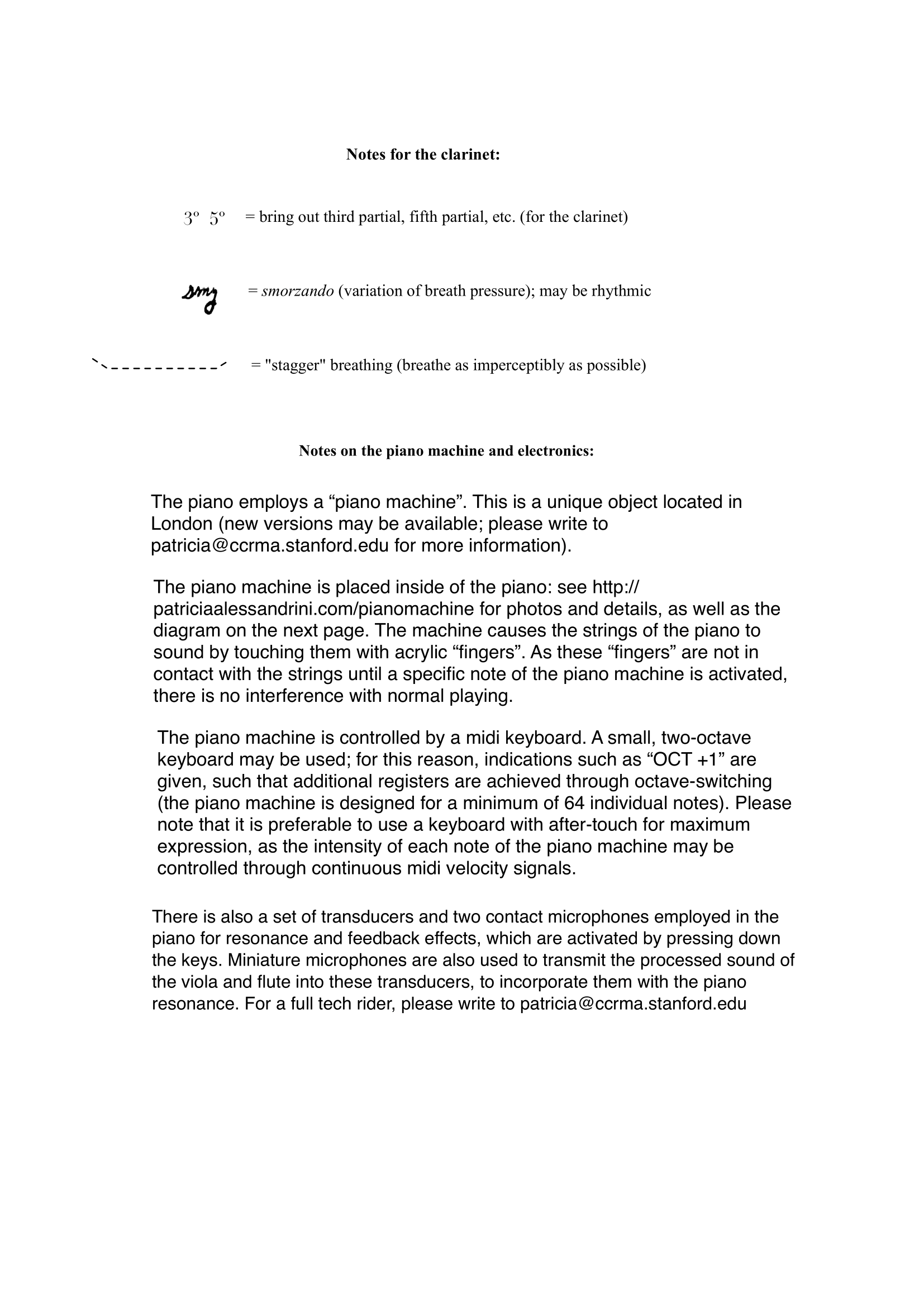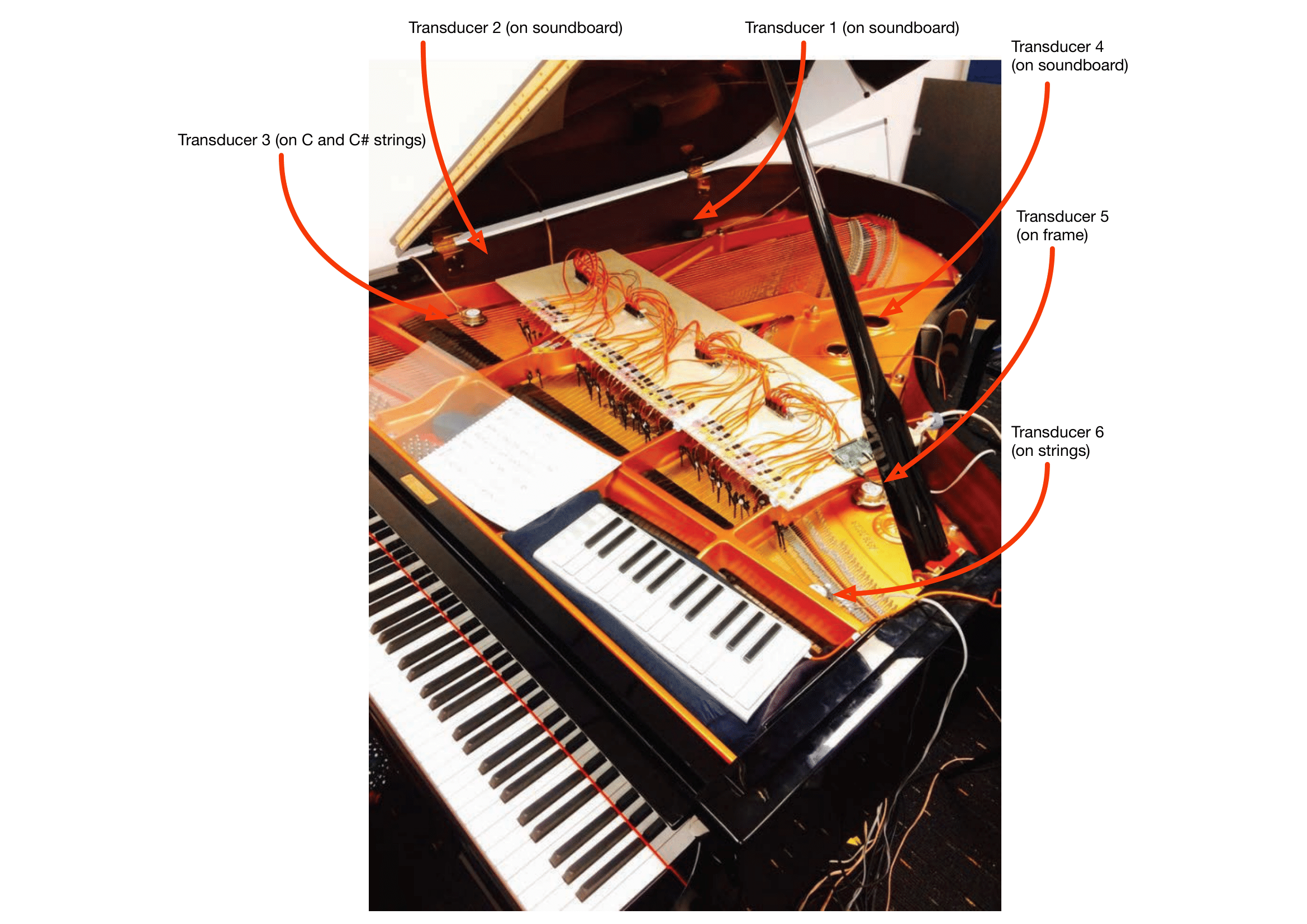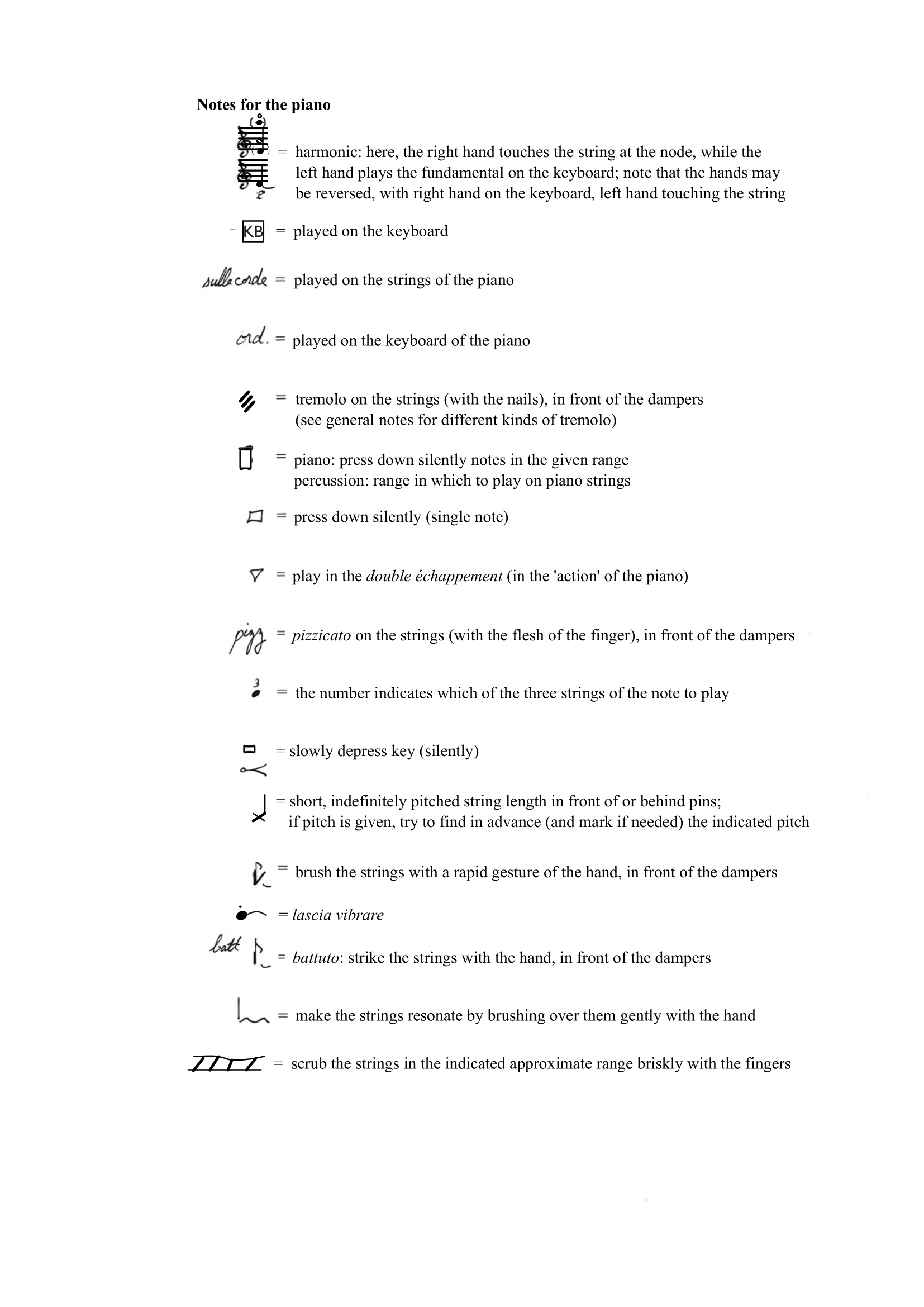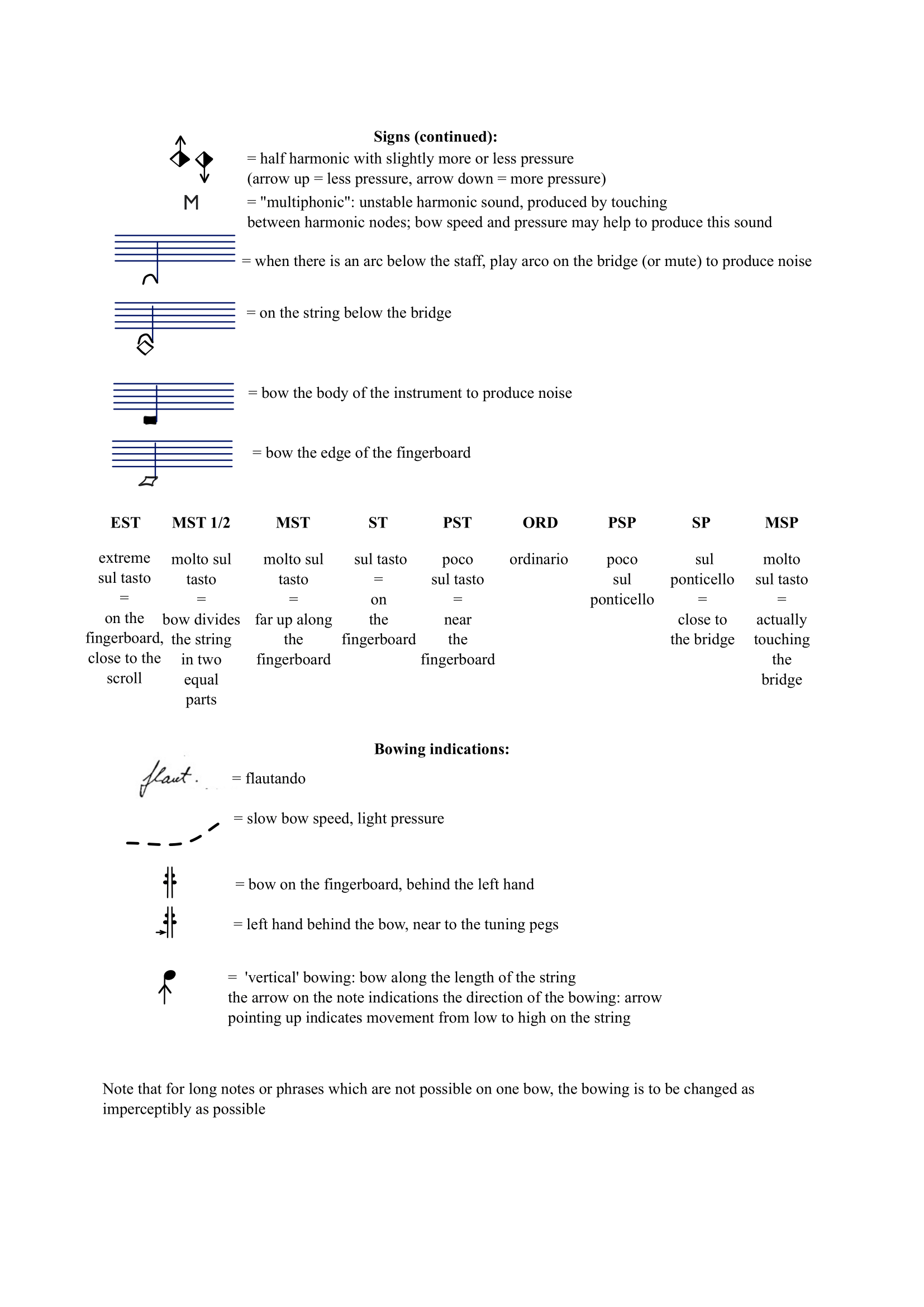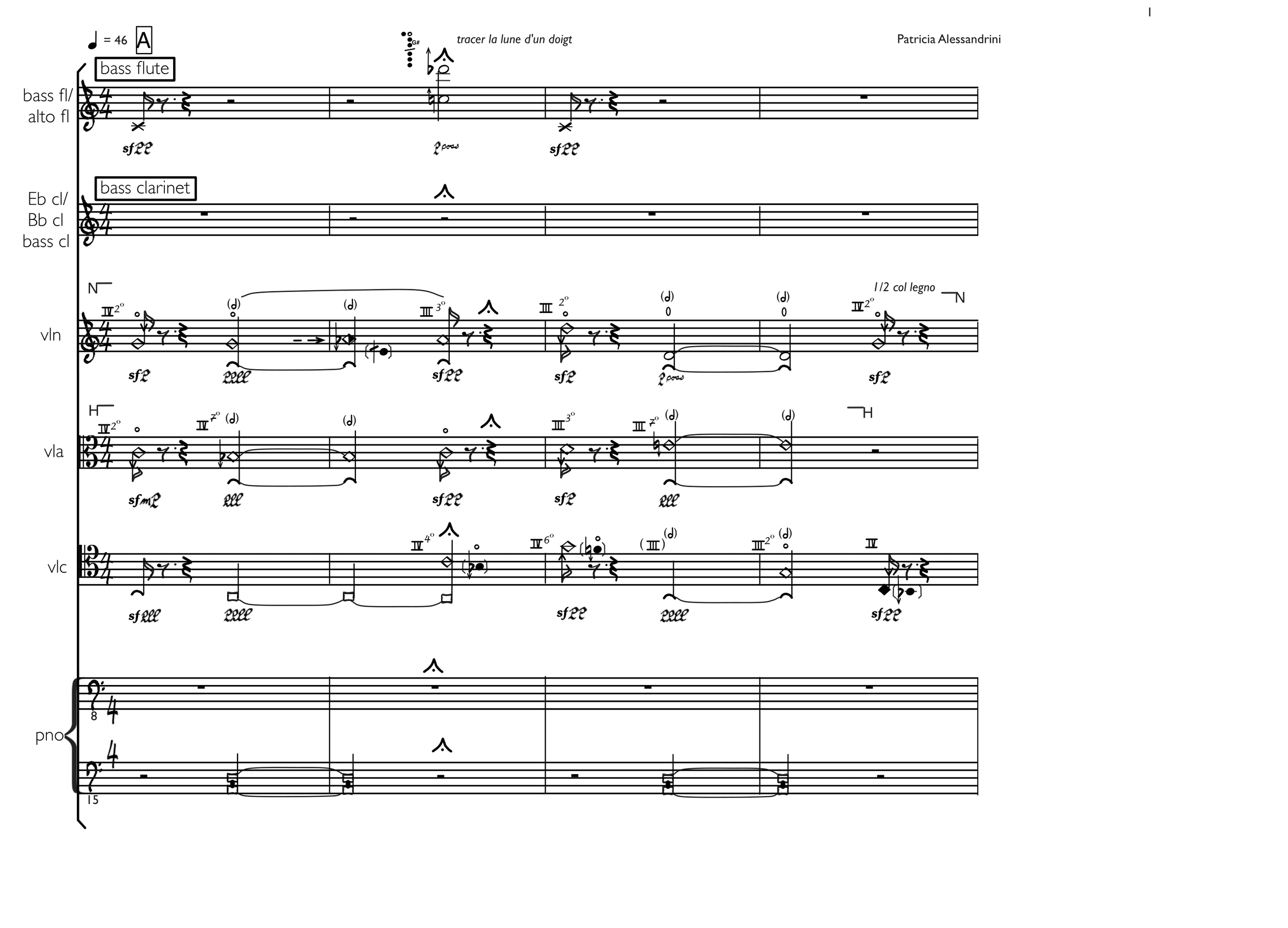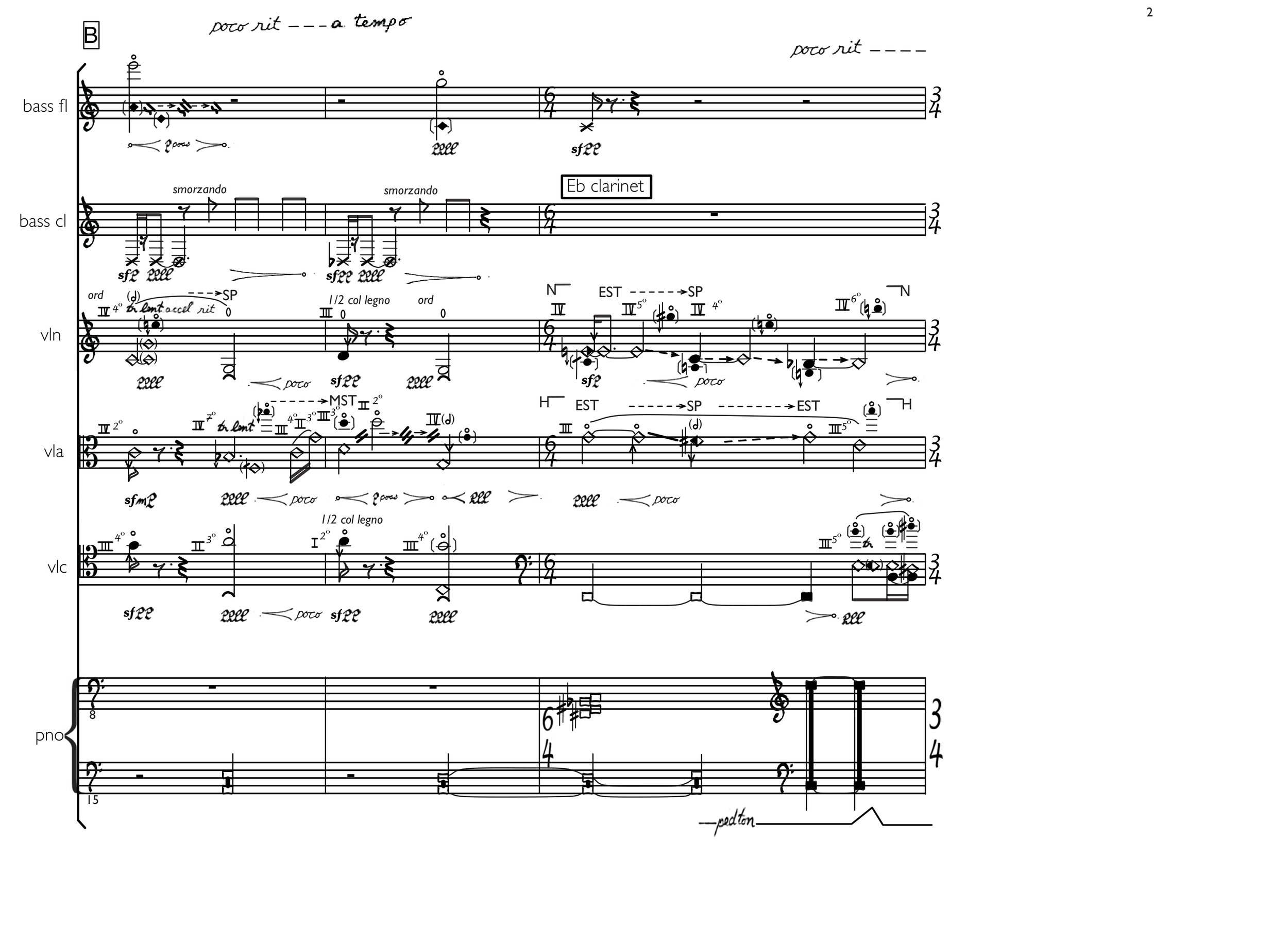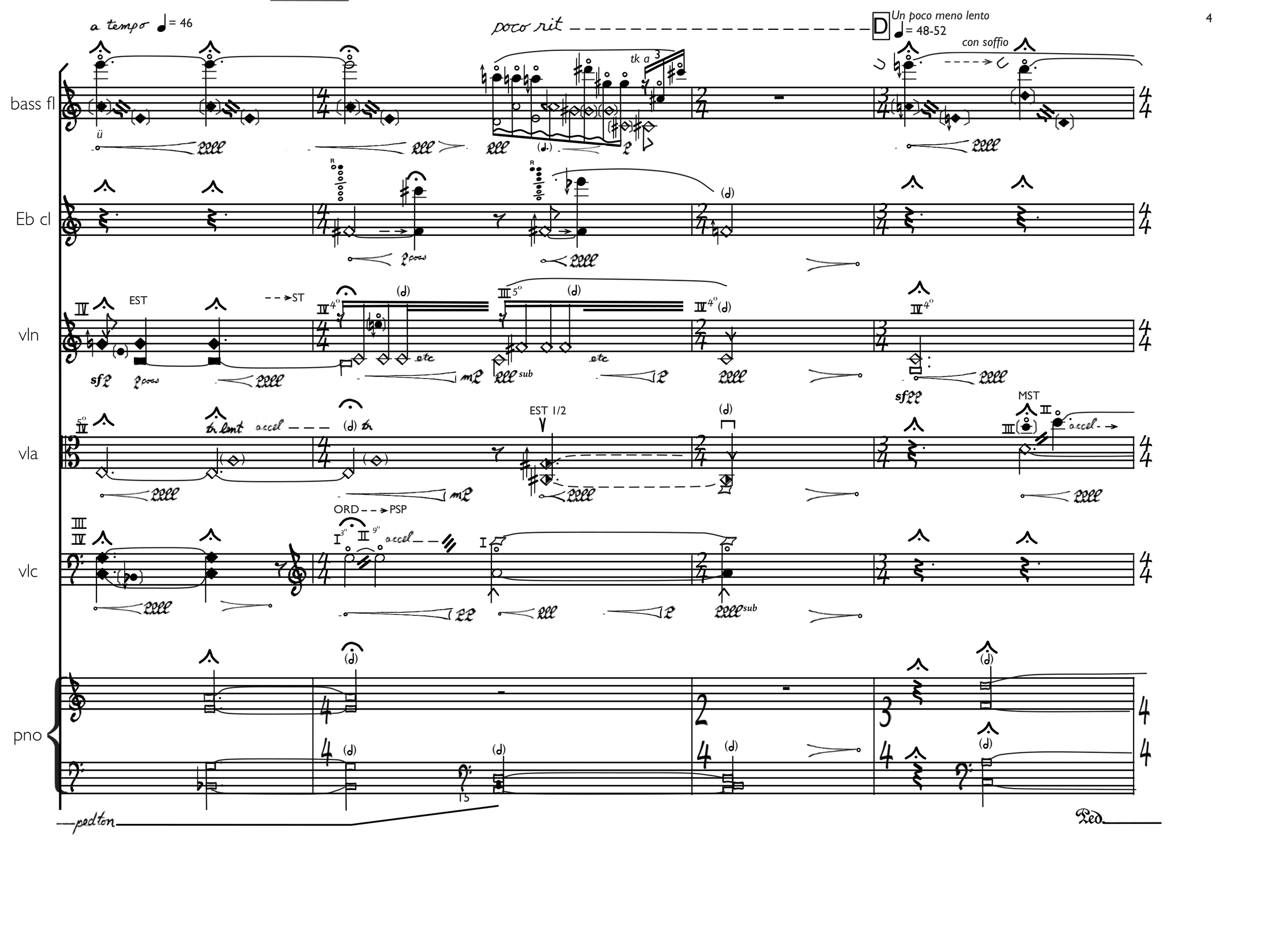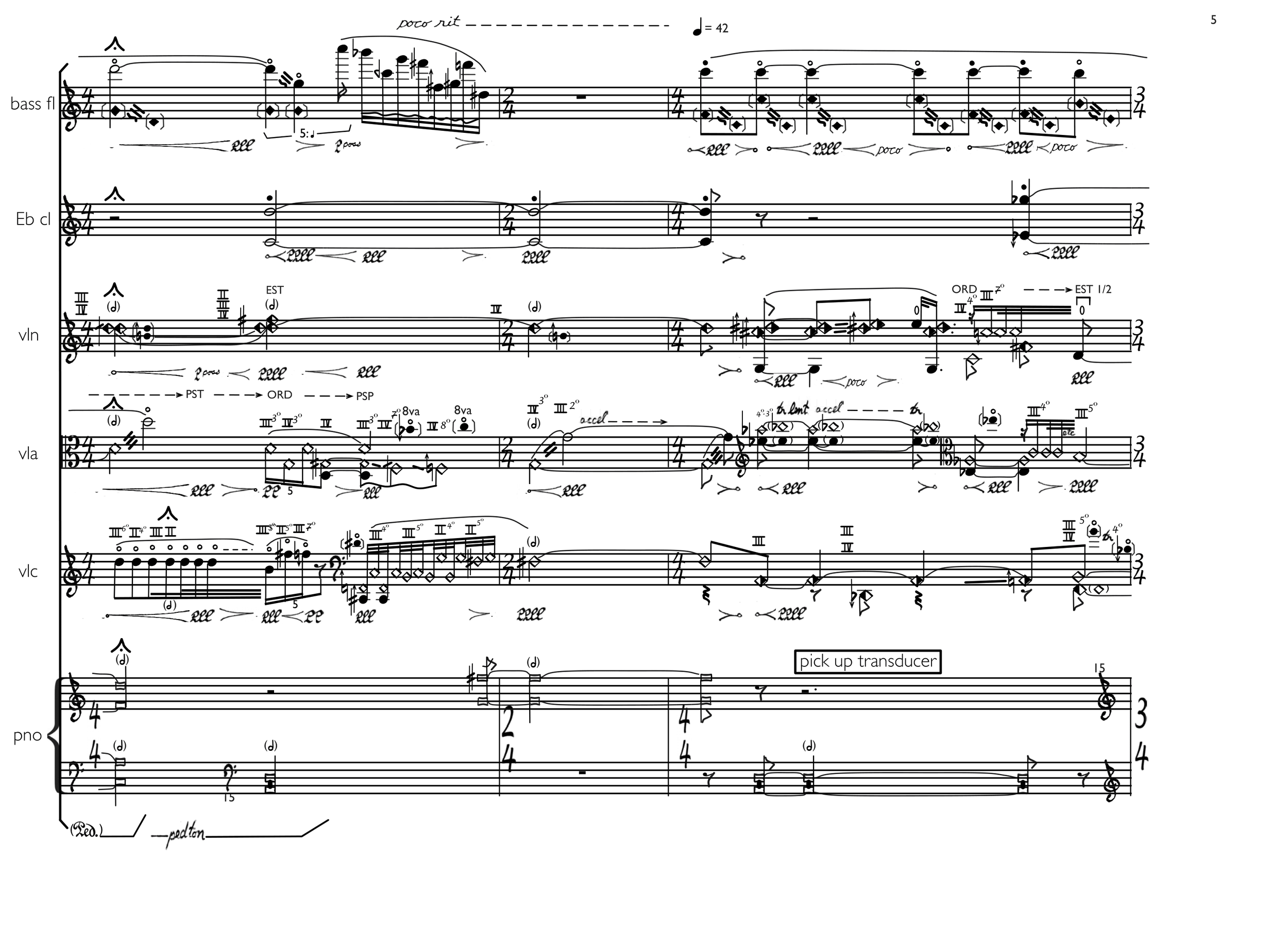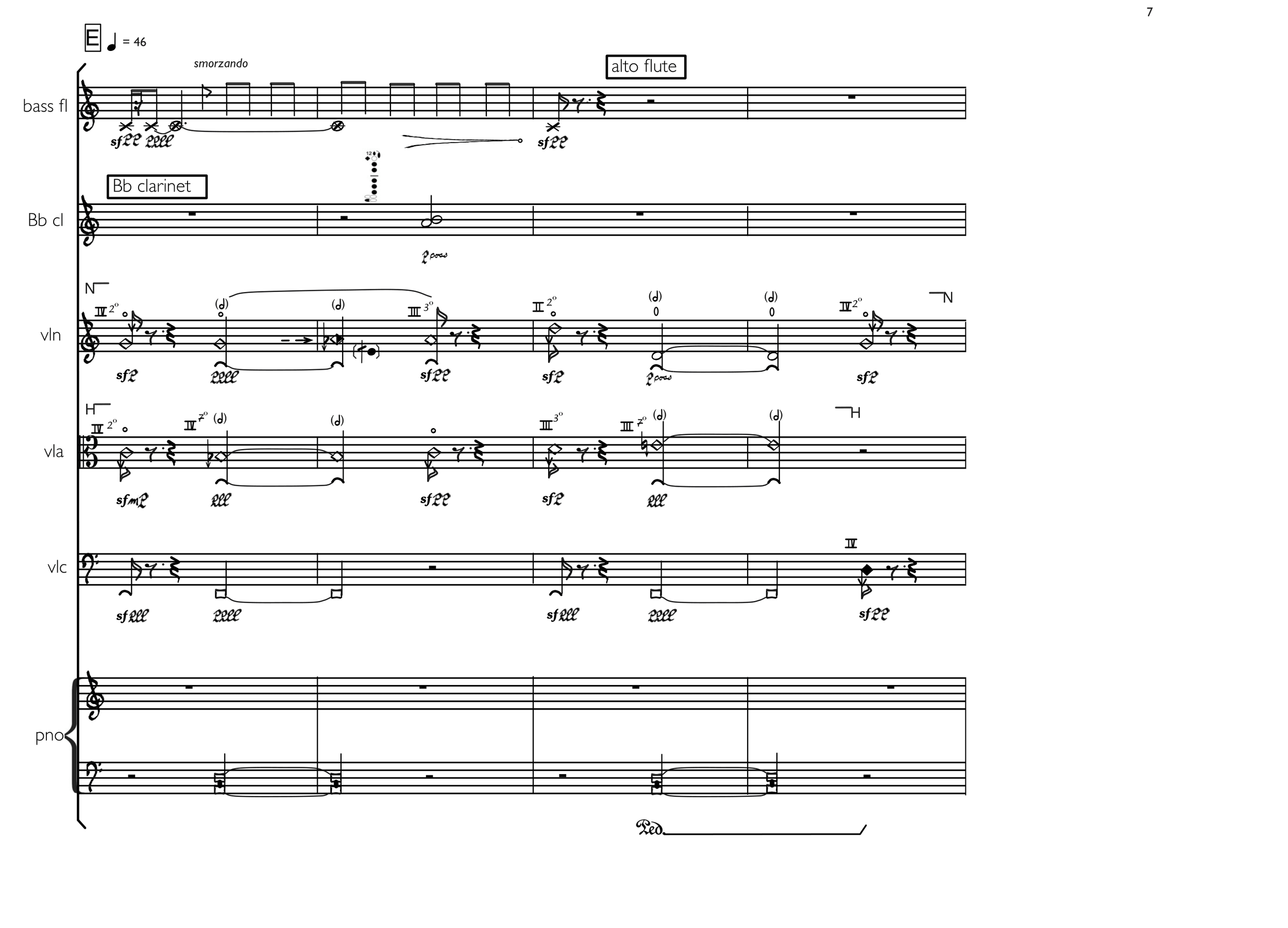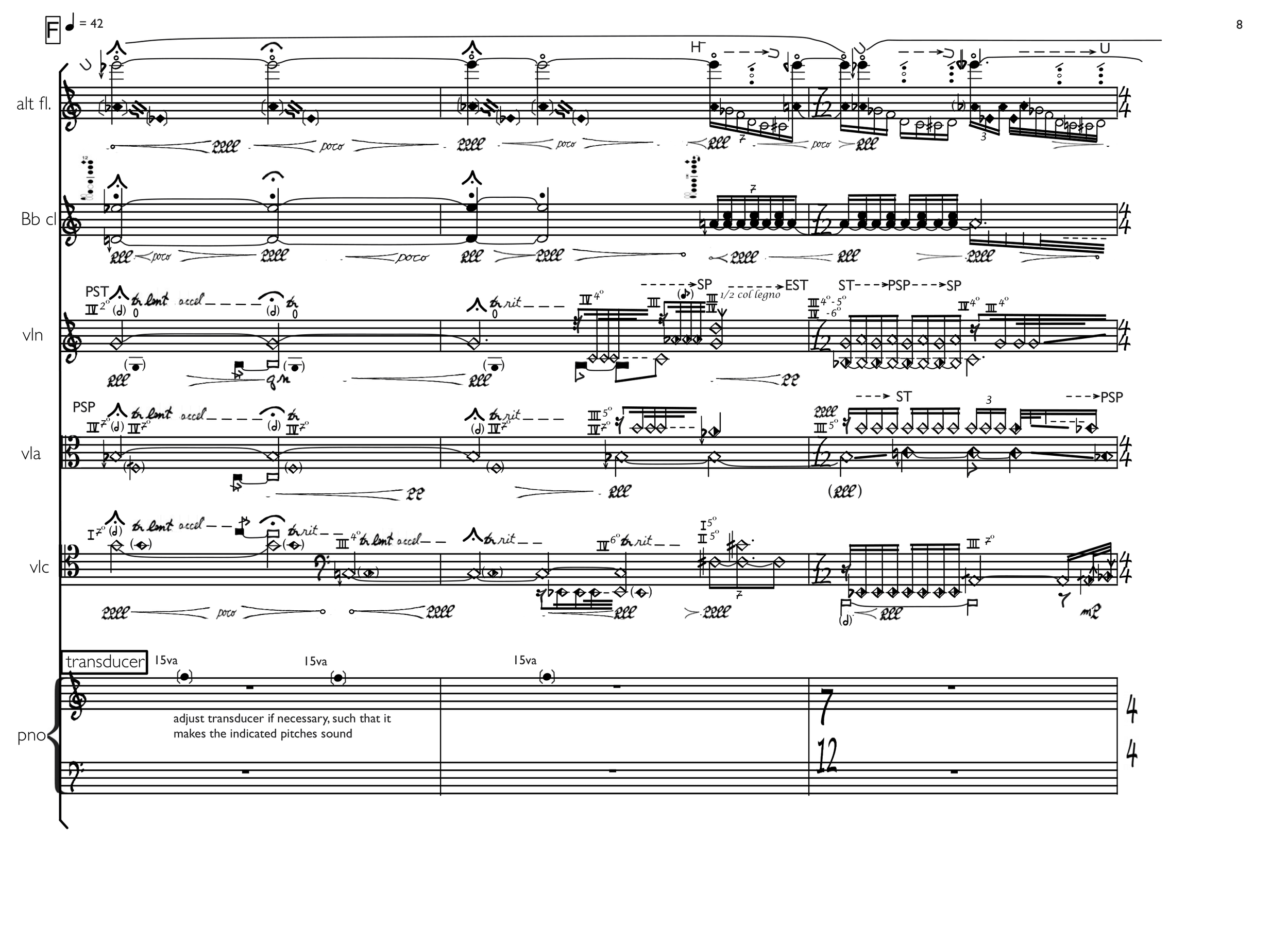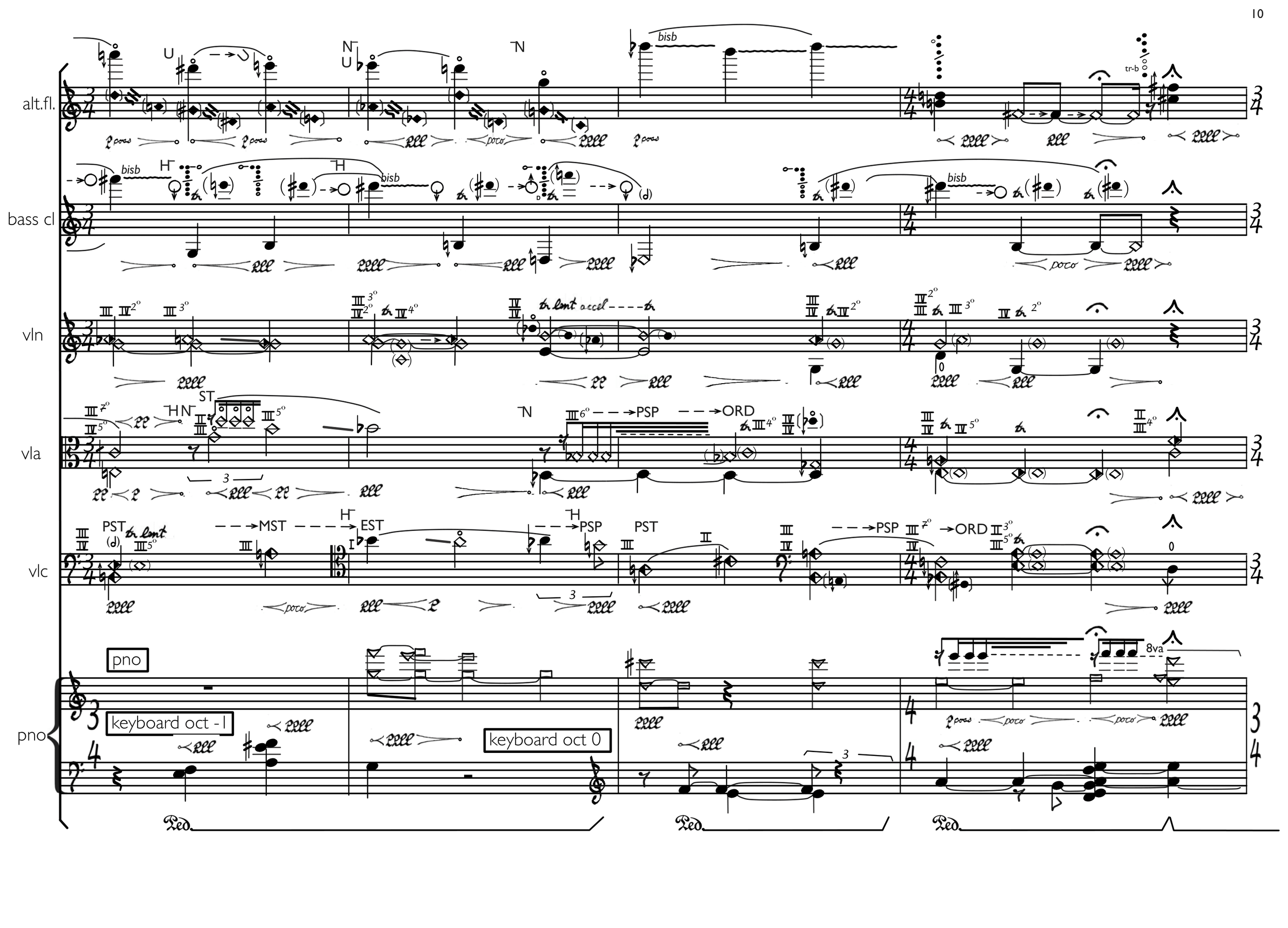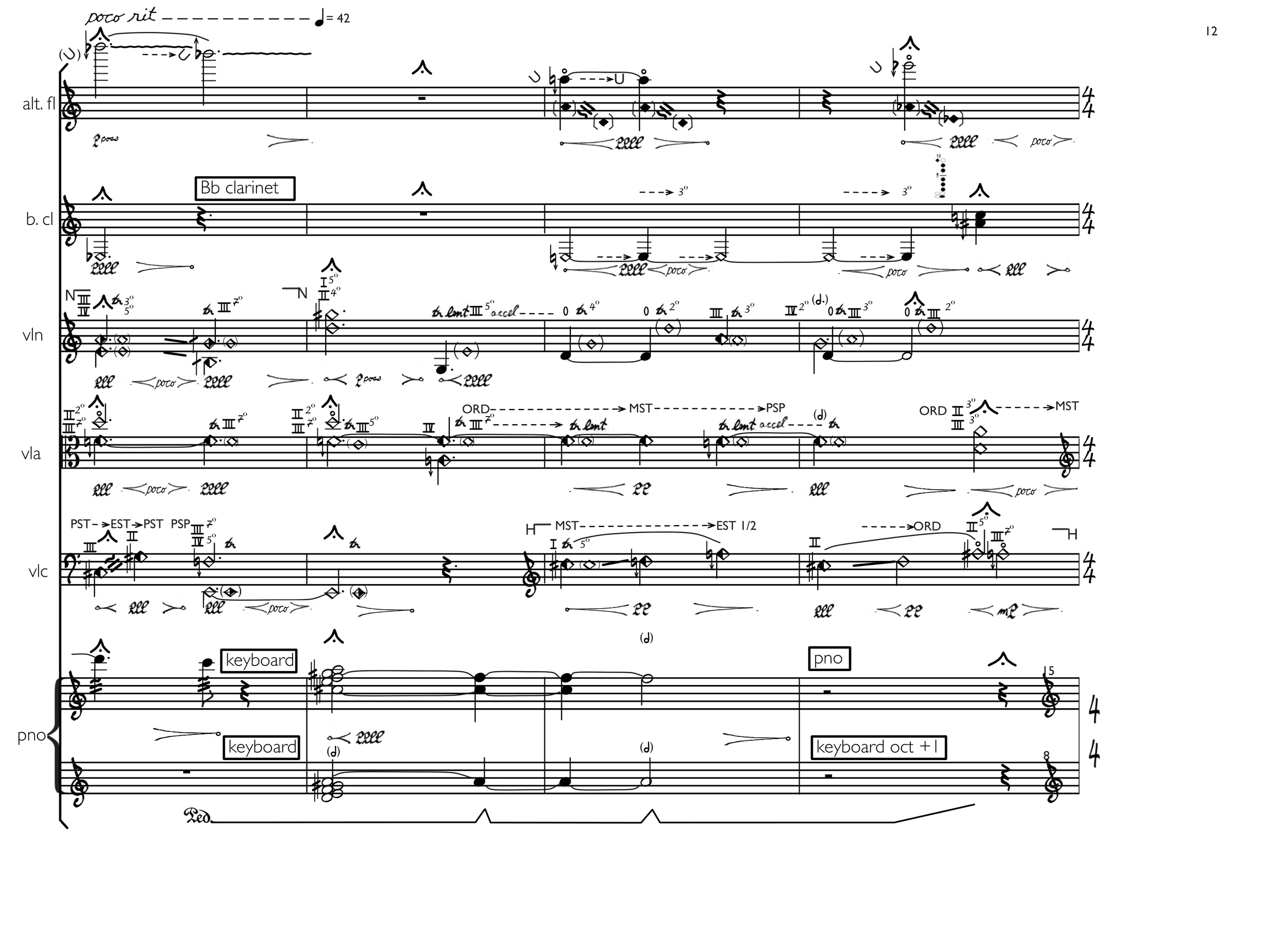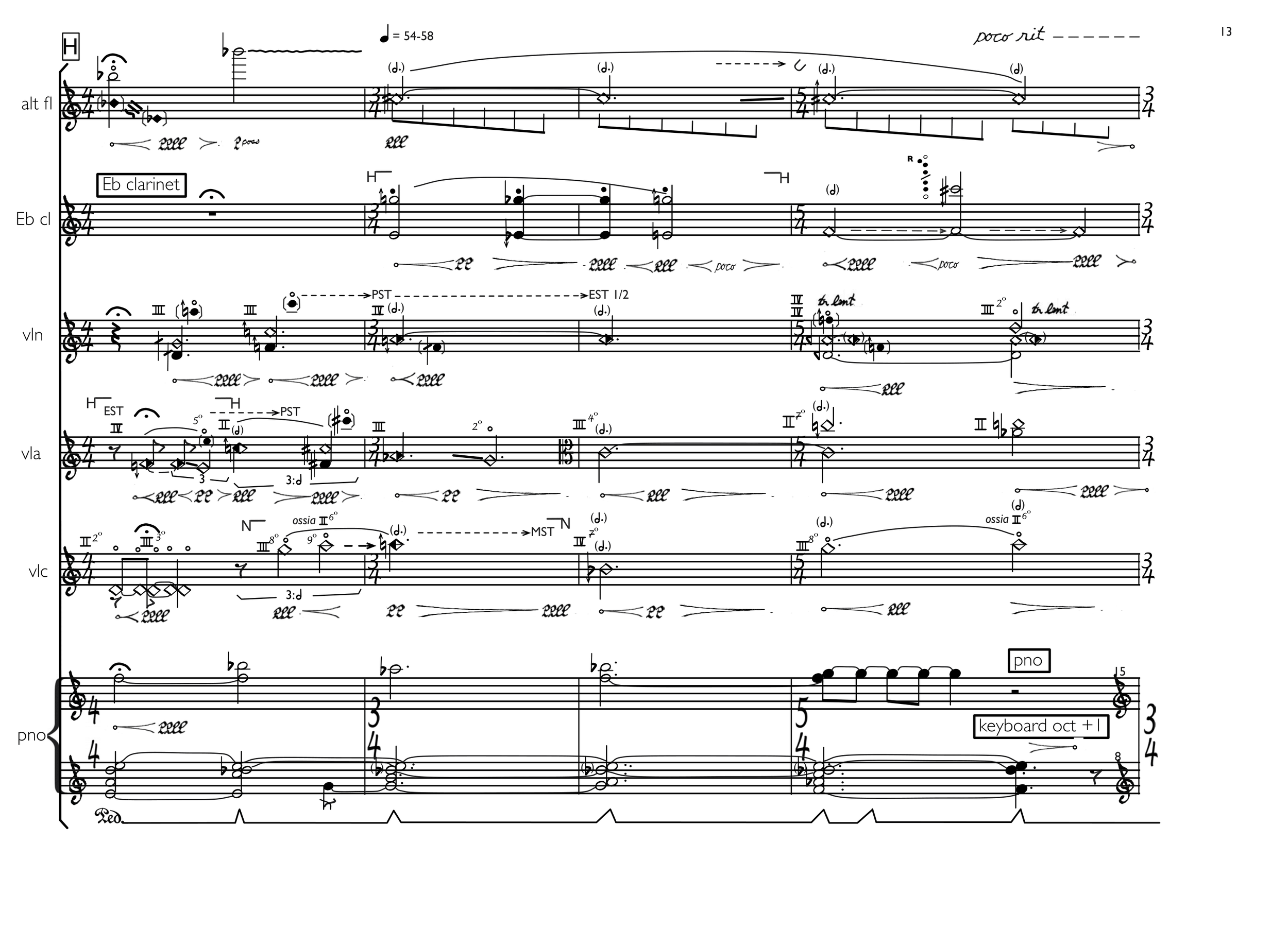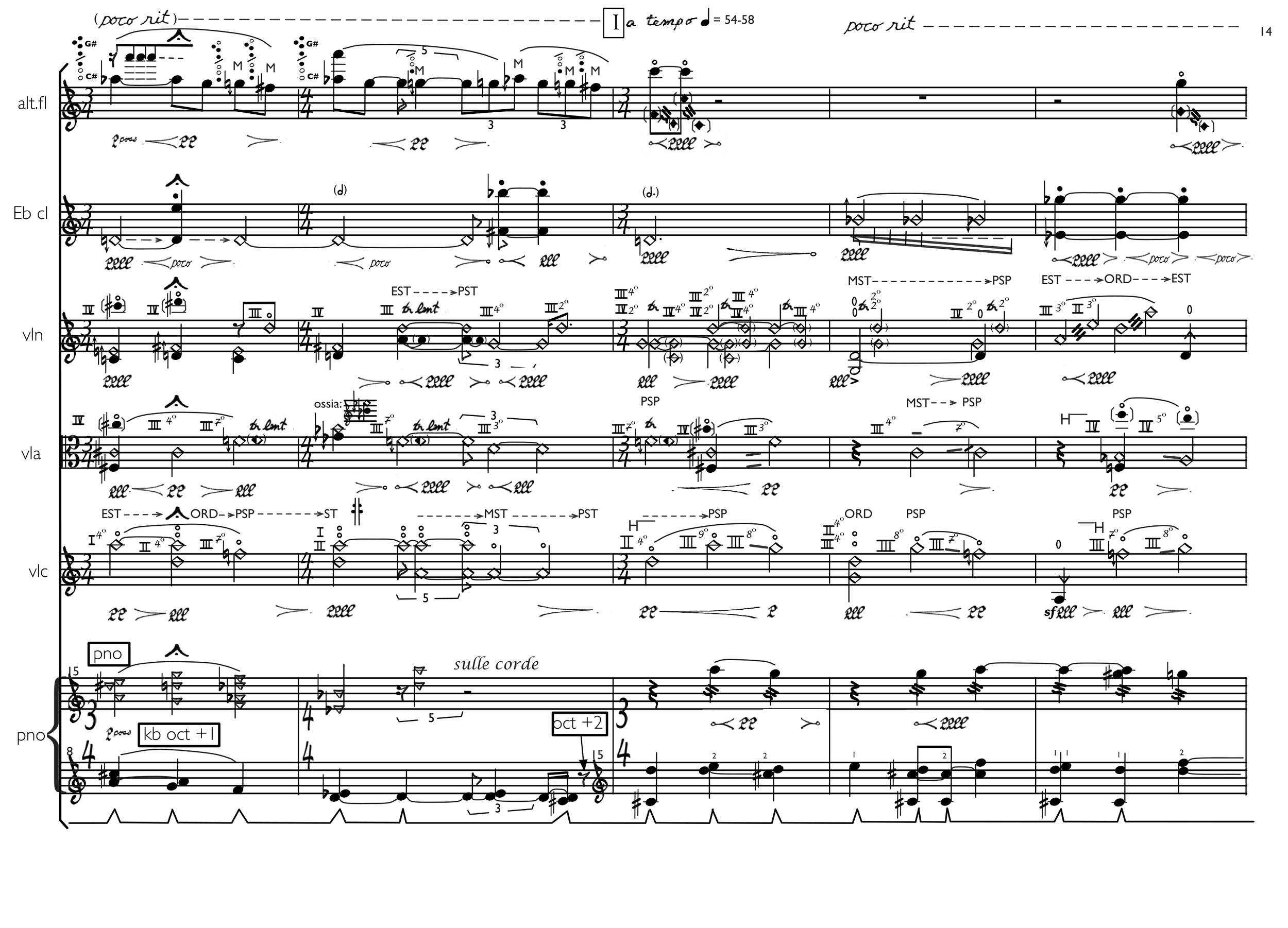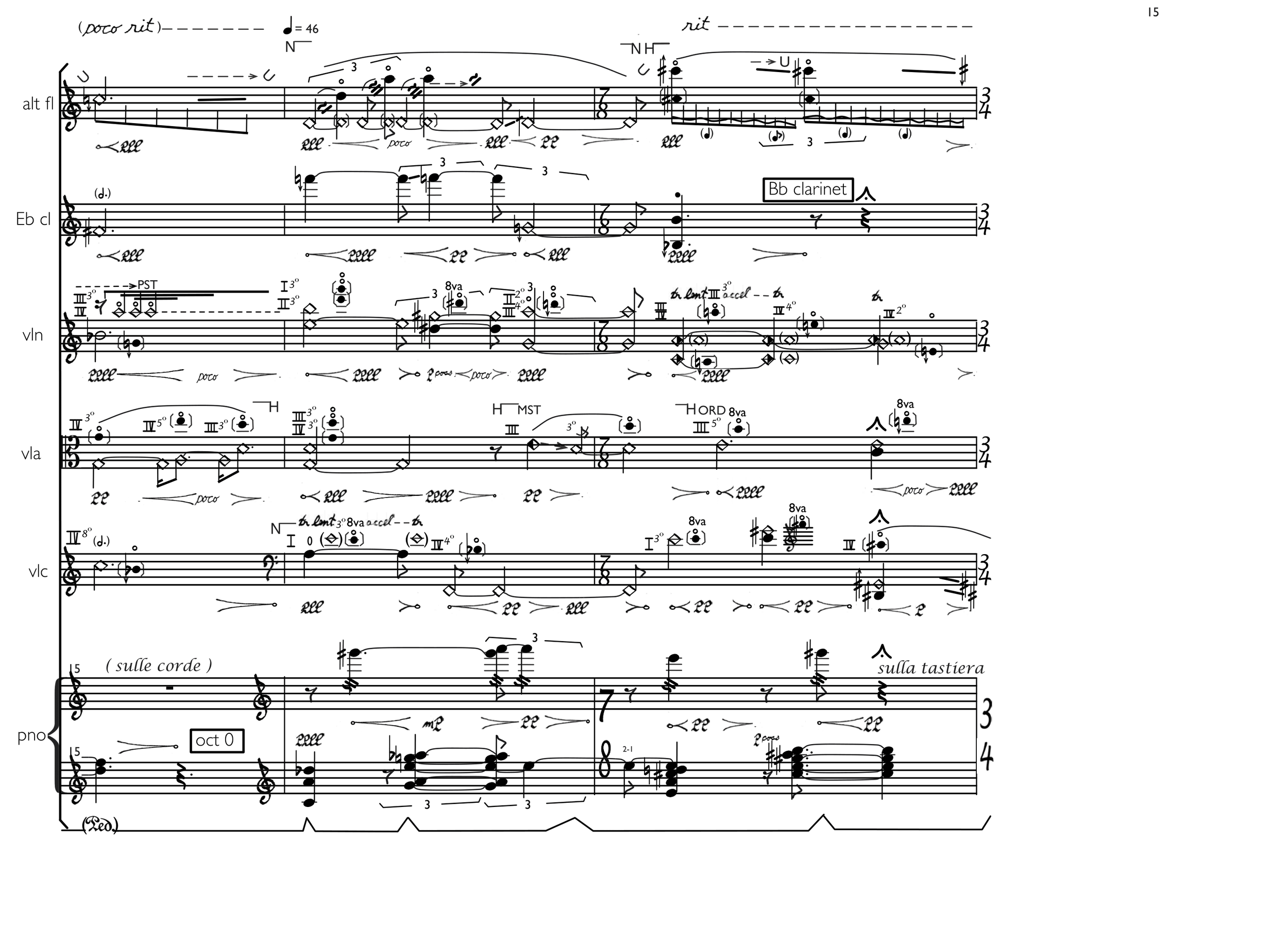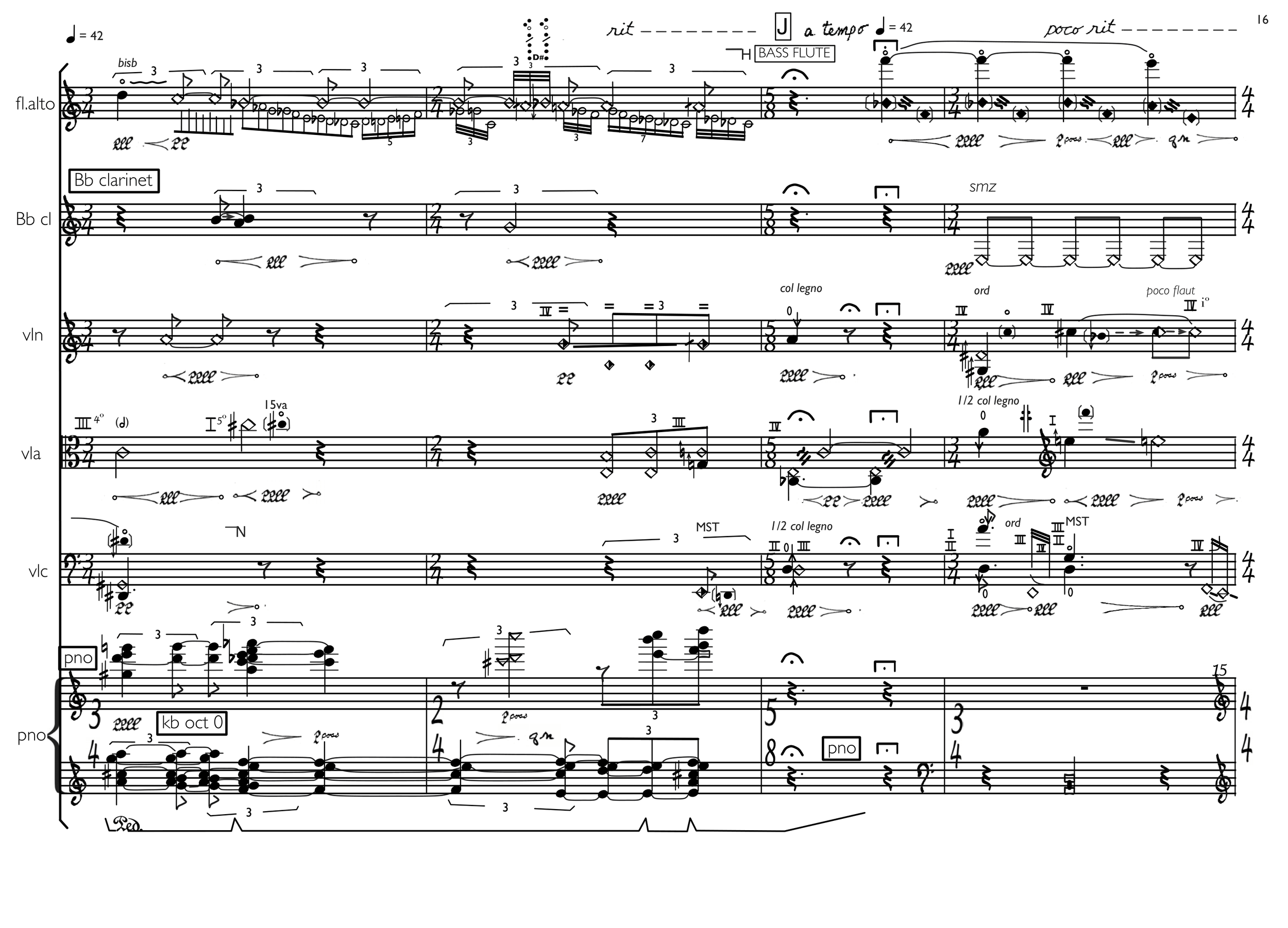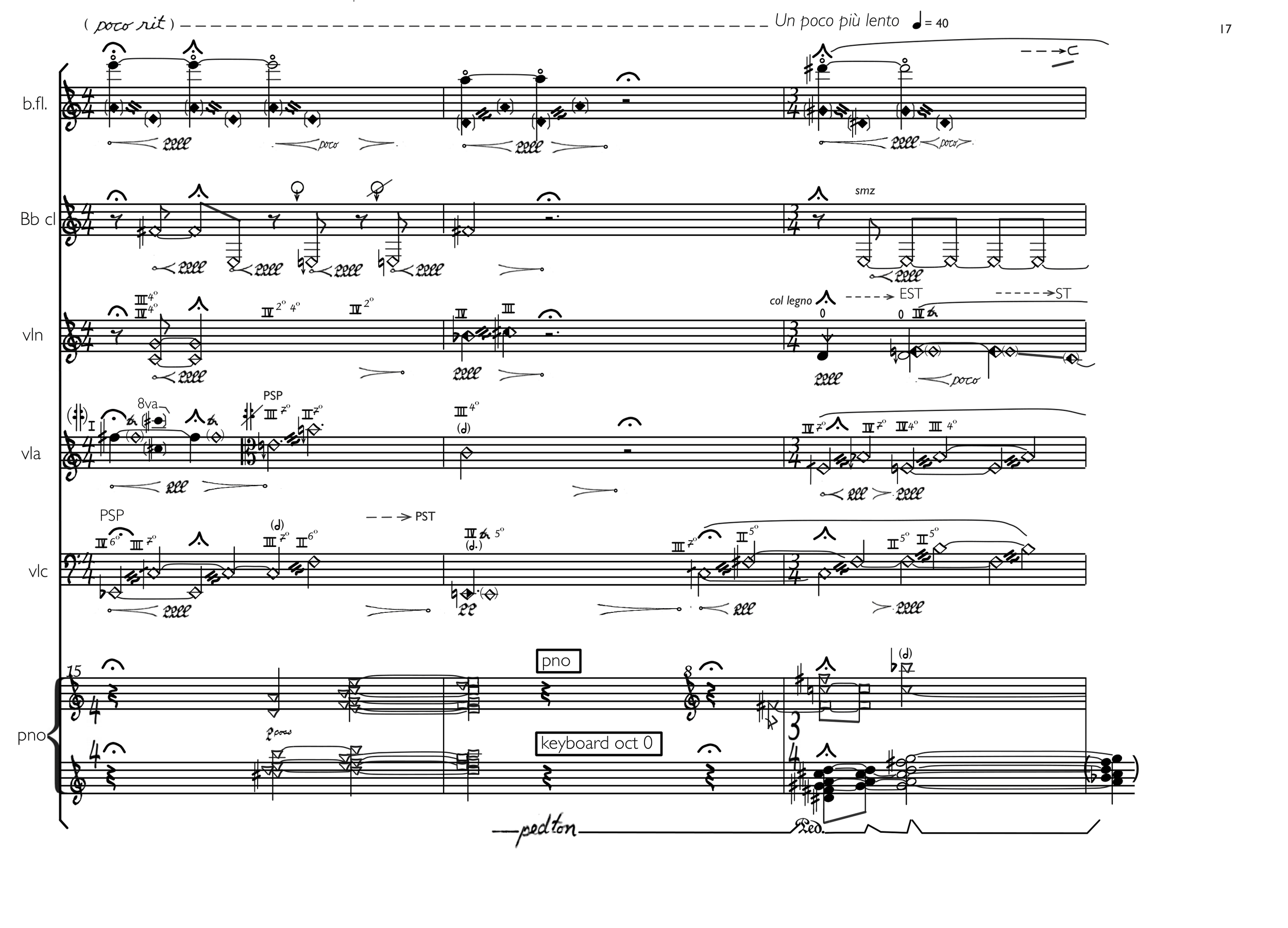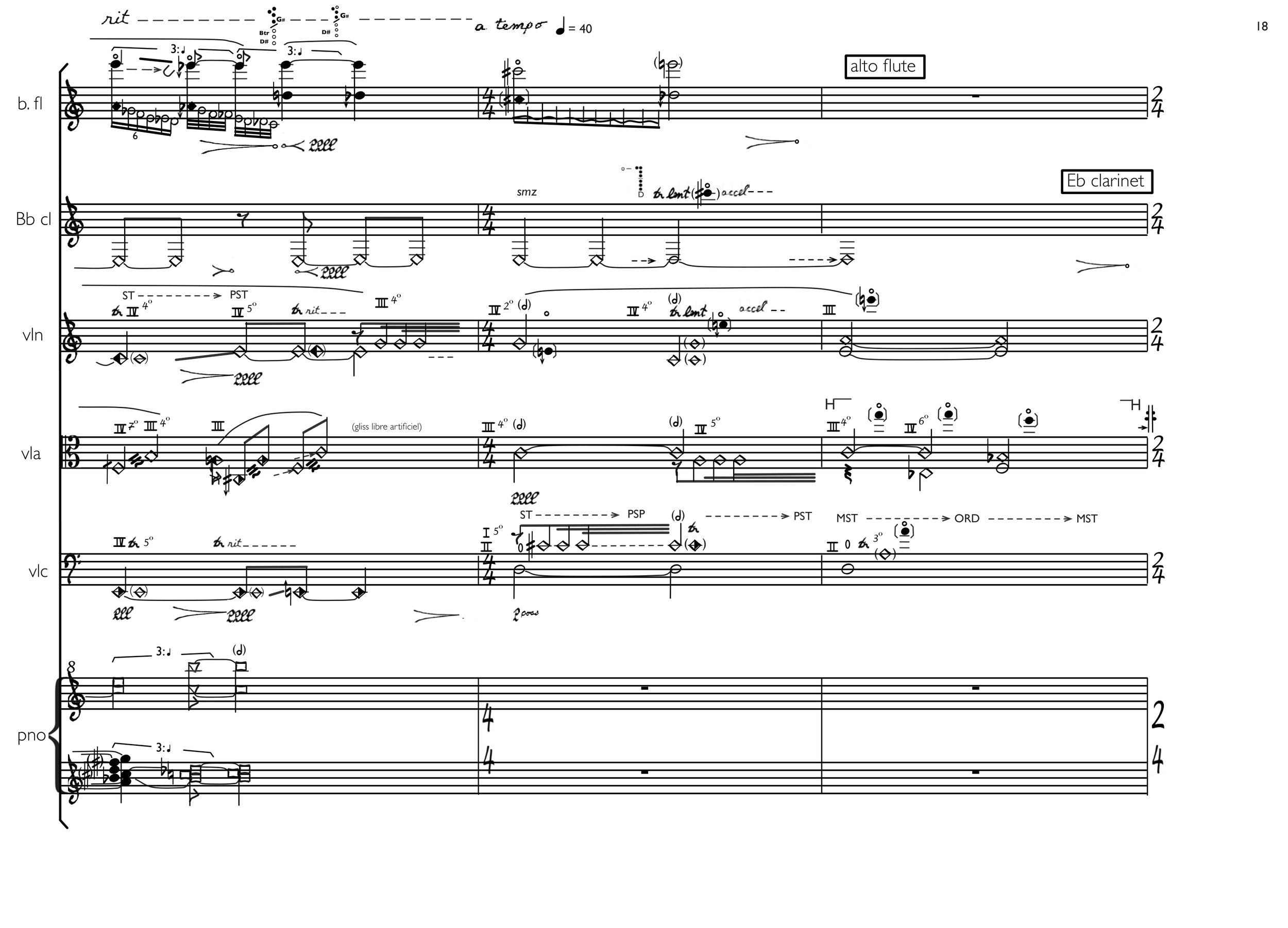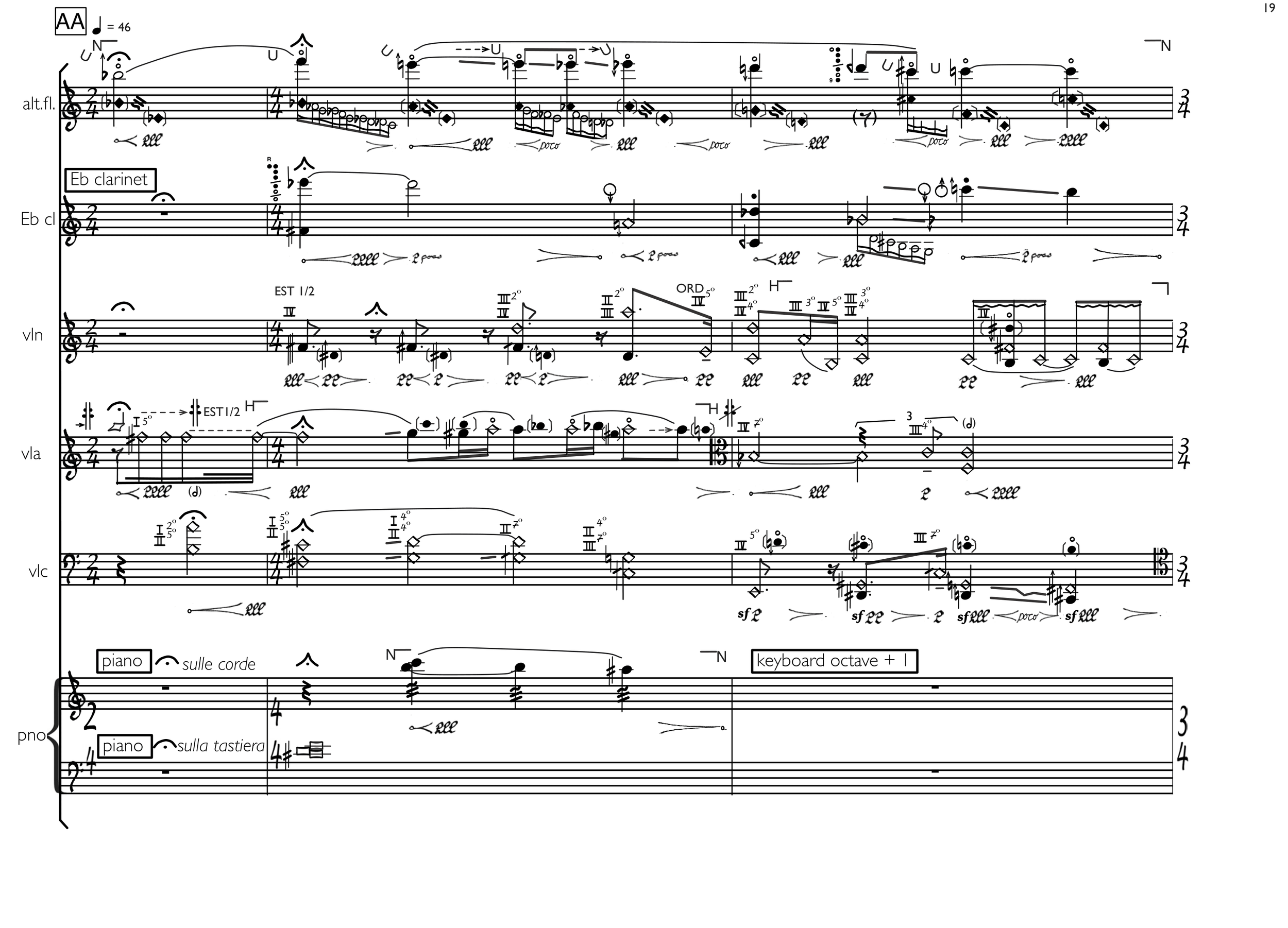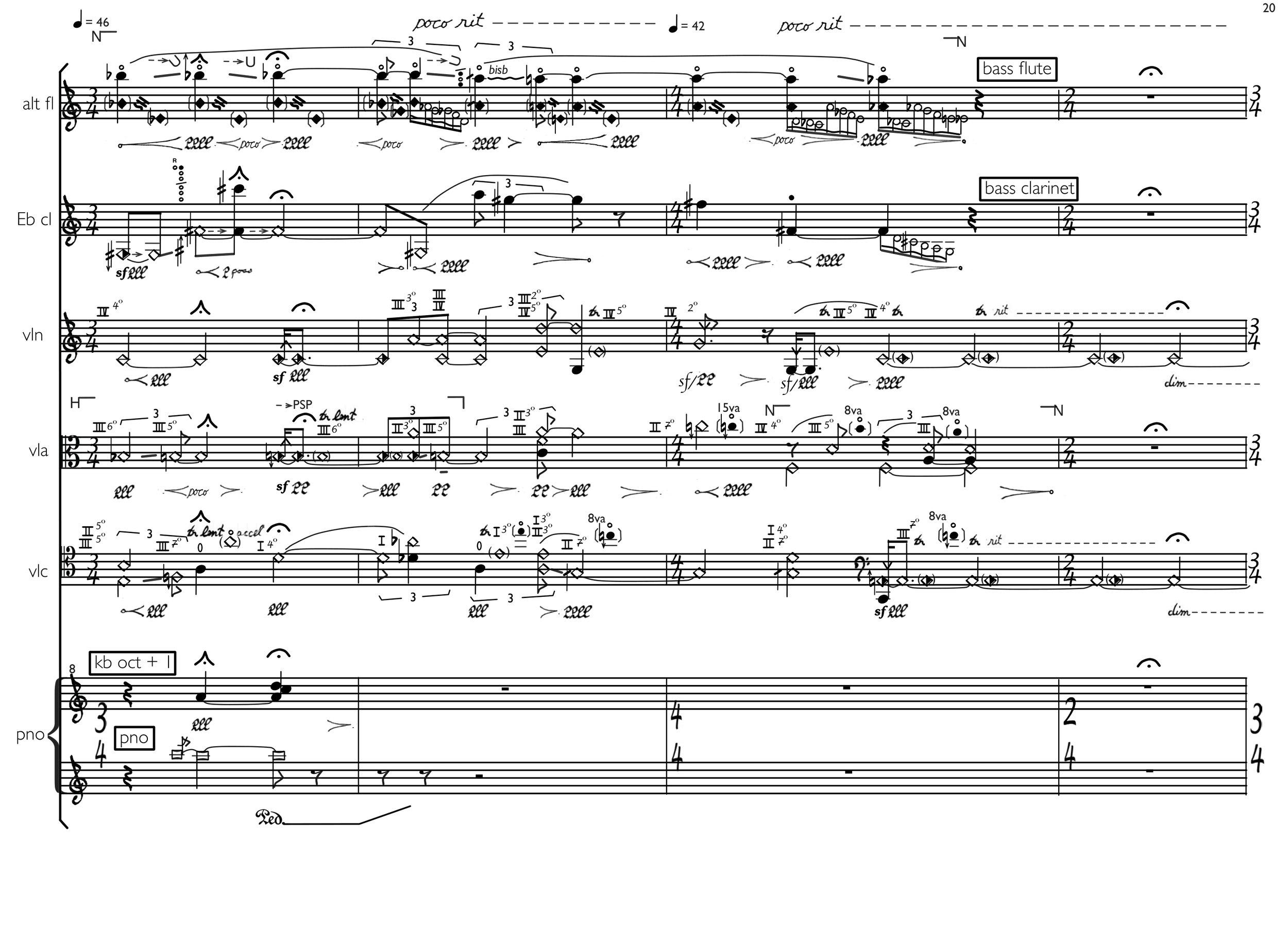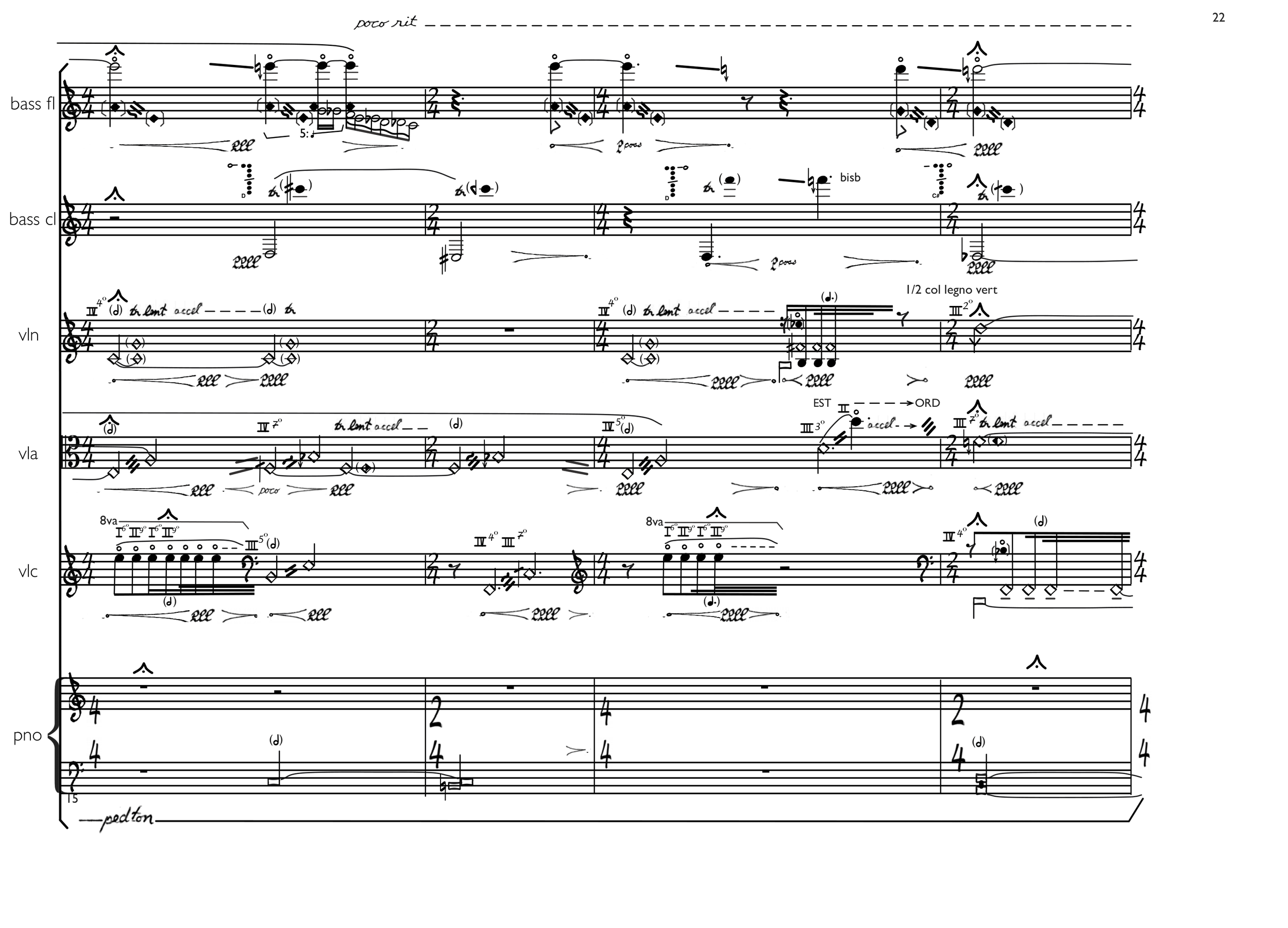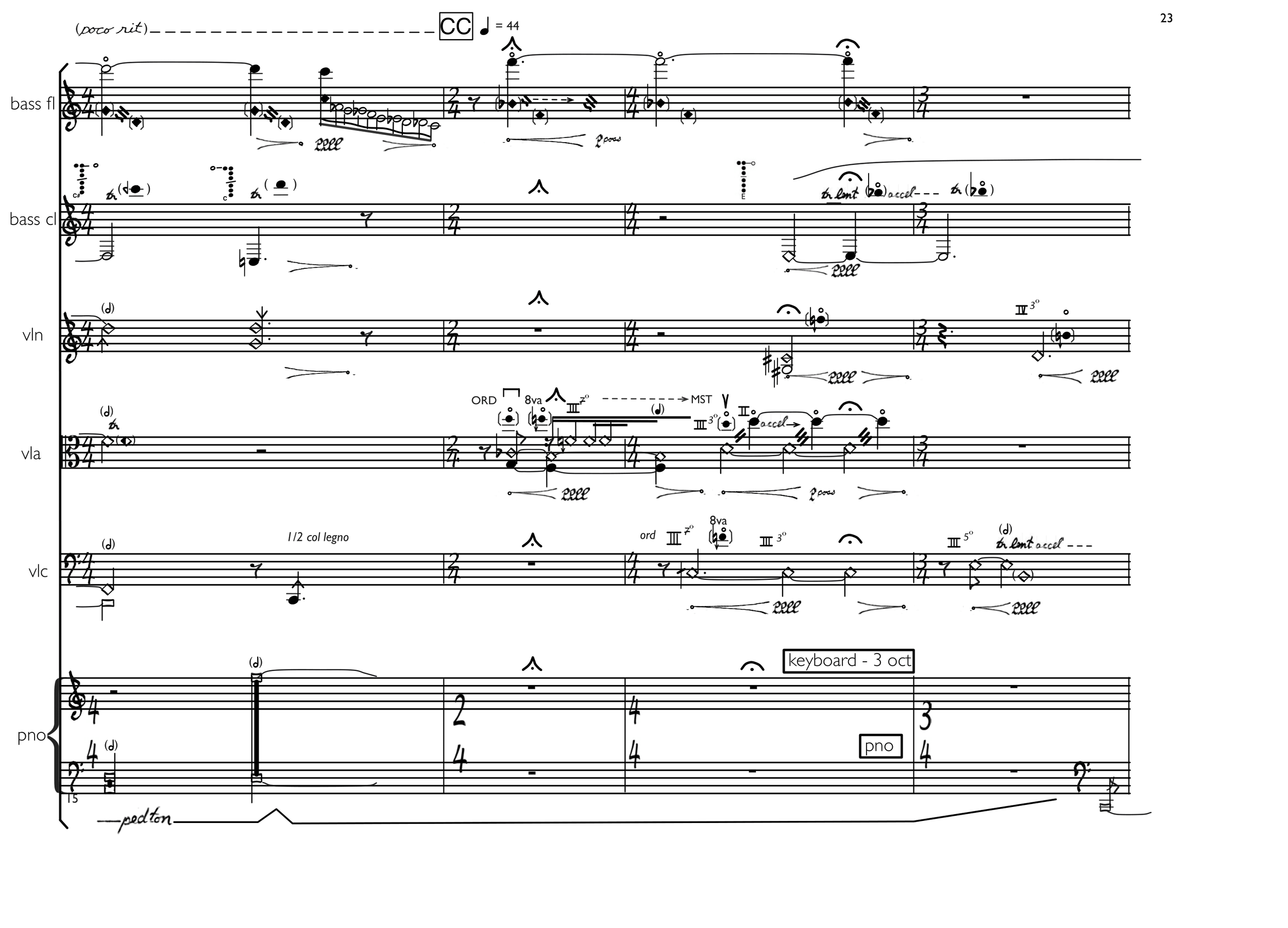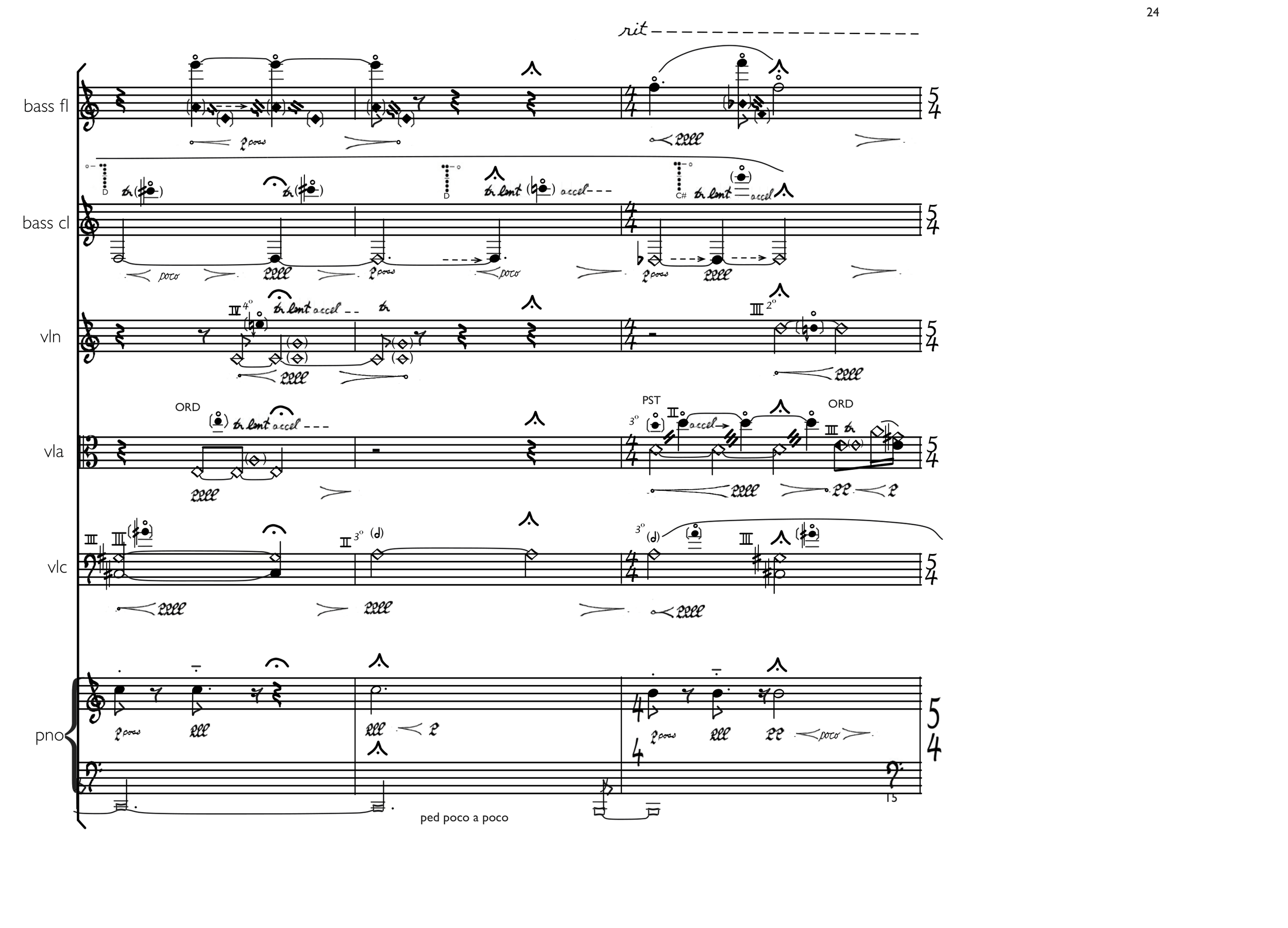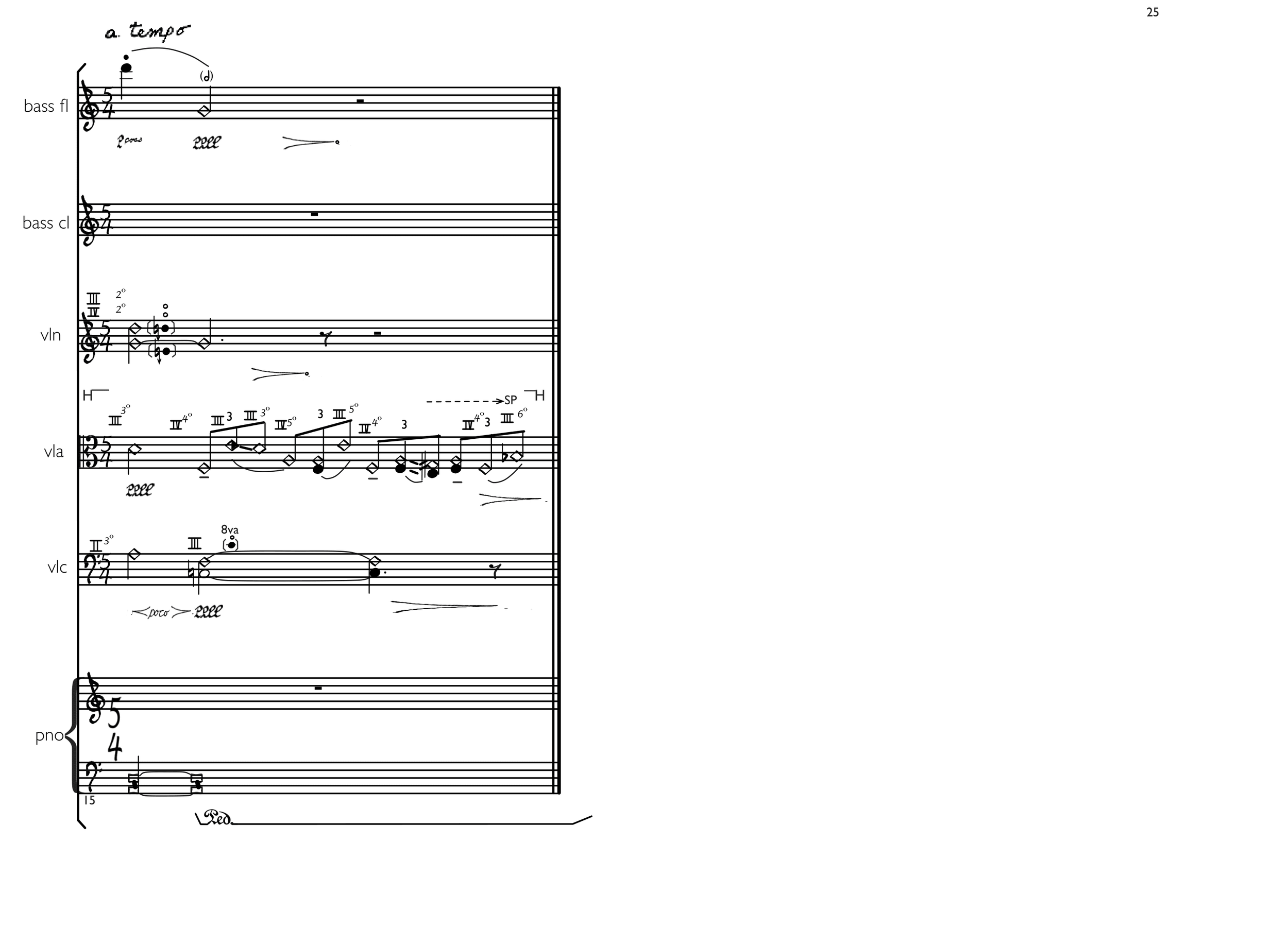Most of my works consist of 'interpretations' of existing repertoire. For this piece, I decided to 'interpret' the Adagio movements of J. S. Bach's violin concertos, to try to understand something about their expressivity in relation to style and convention.
The instrumentalists' expressive possibilities are limited to a restricted vocabulary of techniques, connected up through a system of electronics which 'performs' them itself through devices which cause the instruments to vibrate, in particular by 'playing' the strings of the piano.
The title evokes the act of attempting to apprehend an abstract beauty: a distant, cool and pale yet luminous object.
Tracer la lune d'un doigt
Scroll through score
PROGRAM NOTE
The title of this work translates as "to trace the moon with a finger"; it is about how our physical, sensory experience relates to the perception of that which cannot actually be touched. Electronics and physical computing techniques - in this case, a form of simple robotics - are employed to create new physical relations to and between instruments.
This work uses a combination of techniques to allow the instrumental ensemble to cause the piano to resonate, and allow the pianist to make the piano sound in unconventional ways. Two of the instruments - flute and viola - are processed in real-time and transmitted through the piano by a set of transducers. The placement of transducers and contact microphones in the piano (including on the strings) allows the pianist to set feedback into action by pressing down certain notes. The pianist also controls a “Piano Machine" - developed by myself and Konstantin Leonenko at Goldsmiths - with a small midi keyboard: the Piano Machine consists of a microcomputer gating voltage to a set of small acrylic "fingers", one for each note of the piano to be played. These very thin "fingers" dangle between the strings of the piano, such that they laterally hit the adjacent strings when current is sent to them, but do not otherwise touch the strings so that ordinary playing techniques may still be used.
More generally, the title evokes the act of attempting to apprehend an abstract beauty: a distant, cool and pale yet luminous object. The musical object which I am attempting to "touch" is the music of J. S. Bach: specifically, the Adagio movements of his violin concerti. This is part of my continued practice of 'interpreting' existing repertoire through my compositions by analyzing and transcribing recordings of pre-existing repertoire; in this case, I am trying to understand something about expressivity in relation to style and convention. The instruments' expressive possibilities are limited to a restricted vocabulary of techniques, and find their expressivity in their mediation through the piano.
